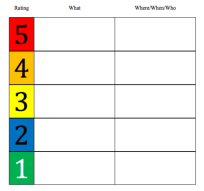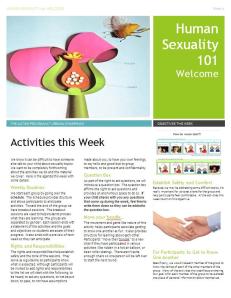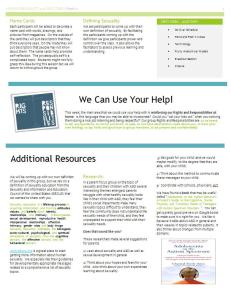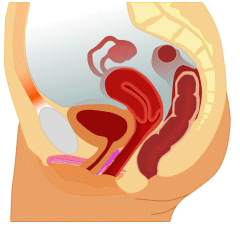 Intimacy was the focus of week 5. This concept can be difficult to understand because it is very broad so this is how we talked about it in our class.
Intimacy was the focus of week 5. This concept can be difficult to understand because it is very broad so this is how we talked about it in our class.
We talked about how intimacy can be divided into two parts: physical and emotional. Physical intimacy involves expressing ones feelings for another person through a physical manner (holding hands, hugging, kissing, and sexual activity). While emotional intimacy involves the feelings towards another person. It is based on how comfortable you are with someone and how much you can share with them. It is important to understand that there are levels to intimacy and that it is not necessarily just for two people in a dating relationship.
For this week’s activities, we opened up with a discussion on the numerous ways to have intimacy with someone. During group time, our plan was for participants to create a “Intimacy Chart”.

We provided them with pictures displaying different types of intimacy ( holding hands, hugging, etc.) and asked them to write down how each of the pictures made them feel. After that we arranged the picture in order to what we felt would be the natural progression of relationships. To finish off the activity we categorized each picture based on whom we are comfortable doing those actions with. The main purpose of the “Intimacy Chart” is to help the participants to visualize the different types of intimacy.
Although this was the plan, one of our students had a different idea of how she should do this activity. She asked for a folder and then decorated it with her boyfriends name. She then put the different acts of intimacy she felt comfortable with in the folder. At first, she didn’t want to share which behaviors she had chosen, but then she decided that she would share. What a great spontaneous adaption!
For more information on intimacy visit our Intimacy Activities and Adult Human Sexuality Week 6- Physical Intimacy and Human Sexual Response
This Week’s Material
Parent Letter Week 5
Intimacy Powerpoint








 The focus of week 6 was to better understand power relationships. During this week, the participants worked together on a activity that helped them to learn about power and control in relationships and specifically the benefits of having more power, benefits of having less power, drawbacks to having more power, and the drawbacks to having less power. The main concept that we were teaching with this activity is that there should be a balance when it comes to power. We first brainstormed ideas on what it meant to have power in a relationship. After that, the participants discussed how different situations could be red flags that a relationship is not safe and we had them place those on the outside of the circle. We superimposed a circle onto our original brainstorming to reinforce this concept (using the powerpoint project and a dry erase board).
The focus of week 6 was to better understand power relationships. During this week, the participants worked together on a activity that helped them to learn about power and control in relationships and specifically the benefits of having more power, benefits of having less power, drawbacks to having more power, and the drawbacks to having less power. The main concept that we were teaching with this activity is that there should be a balance when it comes to power. We first brainstormed ideas on what it meant to have power in a relationship. After that, the participants discussed how different situations could be red flags that a relationship is not safe and we had them place those on the outside of the circle. We superimposed a circle onto our original brainstorming to reinforce this concept (using the powerpoint project and a dry erase board).